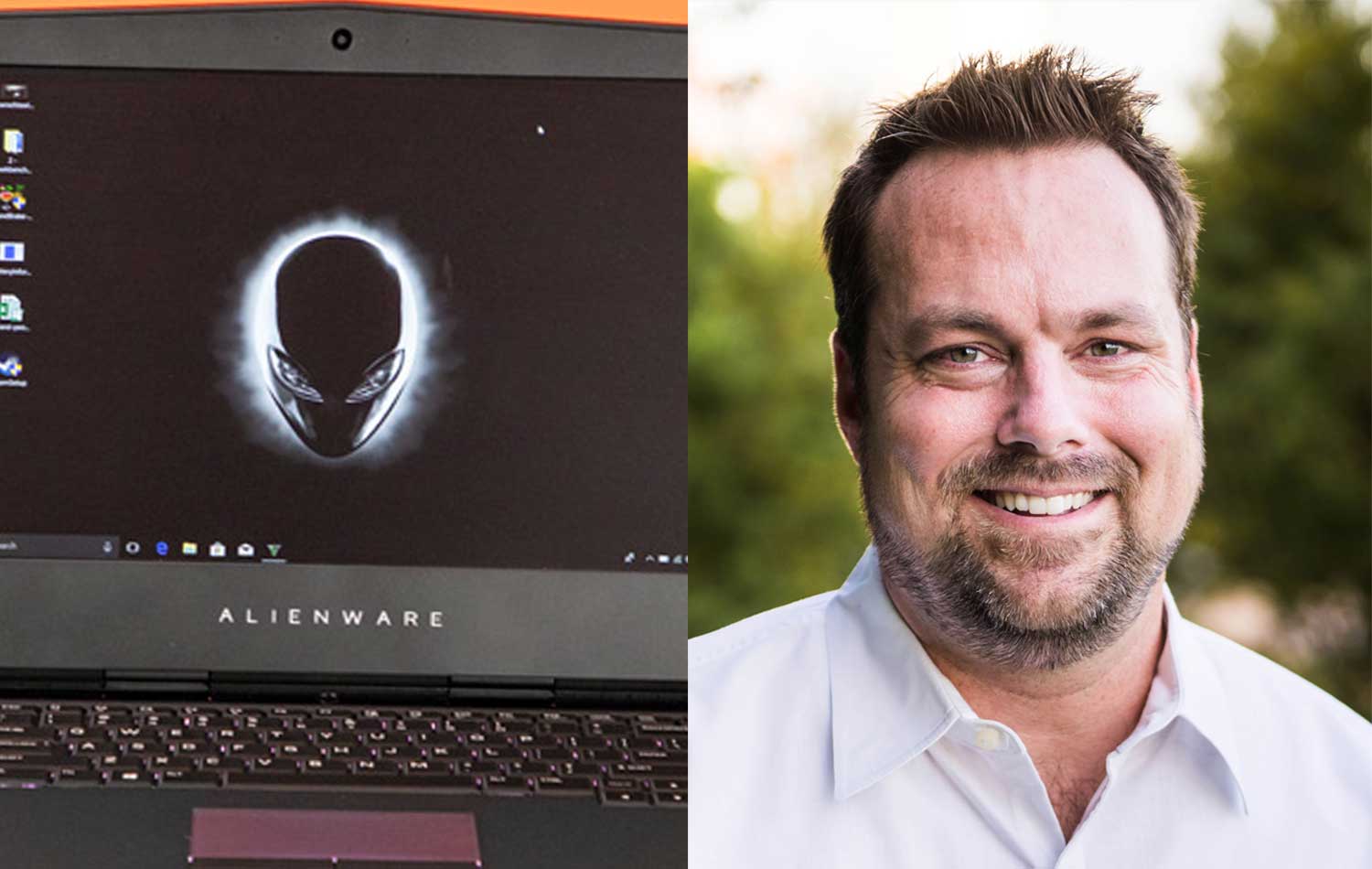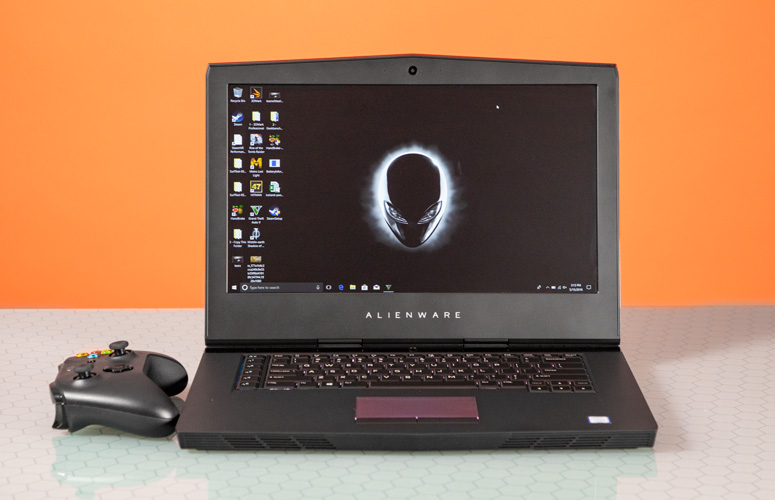The Tom's Guide Alienware AMA Digest
Last week, Joe Olmsted from Alienware joined us on the forums for a special AMA. Dive into our digest to check out the highlights from our Q&A with Joe and our forum members.

Last week, Joe Olmsted from Alienware joined us on the forums for a special AMA. Dive into our digest to check out the highlights from our Q&A with Joe and our forum members.
The Digest
Q: I'd like to start off by asking if Alienware intends to [make a] foray into the tablet/smaller form-factor mobile platform market? We've already seen a lot of other designs whereby they are lower-profile and slimmer, less bulkier.
Joe Olmsted: I'll [give an] answer to one of the other questions below. We have certain tenants that we build our products to. Typically, when getting smaller, there are trade-offs with keyboard, thermals, skin temps, material quality, etc. ... these trade-offs are not ones we've been willing to make.
If we launch thinner notebooks, we won't give up those qualities in the process. We also see many new thinner notebooks that are based on Nvidia's updated lower-wattage/performance GPUs. We do offer one of those parts, but we run it at a higher wattage than everyone else. And that's our conundrum. Do we offer a 1070 that isn't the full performance potential of a 1070?
Q: Any plans to make a white-color Alienware notebook (so it would stay cooler out in the sun)?
Olmsted: At this time, we are evaluating a wider color palette. I think I can safely say [that] white won't be one of them, but we are looking at lighter shades. And it's not the sun making it hot. It’s the raw, unbridled performance that is.
Q: Alienware 17 R5 website says [that] "Tobii IR eye-tracking" is optional, but when you start ordering, it does not let you remove it. Will this option become available?
Olmsted: Tobii comes standard on all high-hertz (120-Hz) and UHD LCD panels. If you stay on the standard FHD panel, it will not come with Tobii.
Q: Any plans to add an optical-network port to Alienware notebooks, so users could directly connect the optical fiber cable to their notebook instead of having to do an optical-to-Ethernet conversion?
Olmsted: We aren't seeing optical networking growing in the consumer space (commercial, yes). As such, we aren't moving into it. However, we do track and intend on being at the forefront of new Ethernet technology.
Q: Any plans to add the InfinityEdge display to Alienware notebooks like Dell's XPS series has?
Olmsted: Oftentimes, the LCD panel isn't what drives the size of our notebook. It's our thermals. We typically figure out the performance we need, then build a notebook around that thermal solution. If then we can offer the performance we want with narrower borders, we will.
Q: Any plans to add a Linux OS option for Alienware notebooks?
Olmsted: At one point, we did offer the SteamOS on a desktop/console, the Alienware Alpha. Windows was also offered on that product, and it outsold SteamOS considerably. We wanted to see the SteamOS flourish and provide a purpose-built gaming ecosystem, but we did not see that happen.
Q: Will Dell/Alienware be offering the Alienware Elite/Pro Backpack outside of China anytime soon? Why were the release[s] of these products geo-restricted?
Olmsted: At this time, very unlikely.
Q: With the confirmation of no Alienware 13 refresh, can we expect a different small form factor?
Olmsted: We have ... launched four notebooks with a smaller display-size notebook for some time, and we think we get it right each time. We are now accepting that gamers want lighter notebooks that don't sacrifice on performance. So, we are looking at new form factors in the future, but we are no longer constraining those to 11-13-[inch] screens.
Q: Any thoughts on investing in OLED development for the other Alienware models?
Olmsted: Speaking of OLED, we are working with our suppliers on expansion of that category, because that OLED is nice!
Q: Would it be possible for Alienware to reintroduce the mux switch (switchable on-board graphics though restart, not Nvidia Optimus mess)?
Olmsted: Today, all of our notebooks that offer internal G-Sync displays are running in the way you are referring to. Also, any external display that you connect to the mDP or HDMI ports on all of our notebooks will run directly from the dGPU.
Q: Any plans for an integrated mechanical keyboard? Per-key RGB lighting?
Olmsted: We agree — integrated mechanical is the unicorn of notebook keyboards. However, we haven't found a switch company yet to truly deliver on the same experience that exists in the desktop world. Per-key LED, internal I presume. Like above, we don't want to sacrifice the feel of a keyboard just to offer per-key lighting. We are working with our suppliers on new and different solutions.
Q: Turning things around a bit, what sort of games do you play, Joe?
Olmsted: As sad as it sounds, I spend most of my time playing PowerPoint, but when I get a free moment or [am] on the second hour of a global conference call, I play Cities: Skylines.
Q: At Computex, Intel and AMD released new 28- and 32-core processors, respectively. Will Alienware try to work on incorporating these new cores into future laptops and desktops, or do you think it's just more tech drama between Intel and AMD?
Olmsted: Our goal is to be time-to-market with all gaming-relevant technologies. If these new products provide benefits to gamers, we'll launch them both.

Q: What do you look for in a perfect laptop or desktop? Does that affect your decision-making when designing multiple lines that have different purposes?
Olmsted: I am, of course, very biased, but here goes! My lifestyle at work dictates the notebook that I use for work and what I value in a *work*-based laptop. However, the one that I carry can still game on the road. :-)
But when we design a laptop or a desktop, we try to understand what a customer wants — beyond the CPU/GPU combo. We believe that Alienware customers are seeking a higher experience. Whether it be build materials, features, etc. But all of the features need to be purposeful. For example, the lighting in our products [works] to allow you to play in the dark, but also work[s] with over 130 games to provide a better experience. This and other decisions (like our magnesium-aluminum alloy) cost money, but we believe that they provide a richer experience.
When we look at our Dell gaming products, the biggest misconception is that an Alienware customer is somehow more "hard-core" — that's not true. We know that your wallet doesn't dictate your gaming lifestyle. So when we design Dell gaming products, we first want to deliver on the primary goal of gaming performance. Yes, they are less expensive and do not have all of the same features, but we believe that we satisfy the core need — playing games for as long as you want to.
Q: Is your Alienware Graphics Amplifier supported with notebooks outside of Dell?
Olmsted: It's a raw/unabridged 4x-lane PCIe port. Today, it will support four lanes of PCIe Gen 3.
Regarding Thunderbolt vs. our port. Yes, Thunderbolt has a larger ecosystem for sure. But here's the doomsday scenario: You are using an external graphics card, and you also have an HDD plugged in to the USB port on your Thunderbolt dock. The Thunderbolt dock shares bandwidth. Do you want to drop frames because of some unknown HDD call to your drive via Thunderbolt? We don't share USB and graphics lanes.
Q: When people are preferring smaller, more-portable systems, why would someone choose to buy a laptop like the R4 that weighs more and has a large AC adapter? Is it because you trade power for portability, or would people choose to buy a larger system because [[portability]] is not required? Or do people in the market for this kind of system not care about portability or aesthetics?
Olmsted: Great question and something I get asked often. We know from speaking to our customers that the primary purchasing reason is performance. Our 15 and 17 notebooks are not typically "daily drivers." They are "desk queens" that don't leave the house very often. In fact we worked on specific battery technology to ensure that our batteries don't get overcharged for being plugged in all the time.
Again, in speaking with them, [our customers, we know that] the purchase of a laptop that has a 10-lb. bag weight is driven by the desire to move from location to location occasionally and still have all of their gaming performance. Prior to Nvidia's MQ technology, you couldn't get 1060-type performance [on a machine] under ~10lbs. Today, some are offering it, but we build our notebooks so you can have the same performance at hour 1 and hour 6 of gaming of a long night session of Overwatch.
No one wants to go back to the days of carrying gear grip bags, moving their desktop and display (remember moving that 20-[inch] Sony Trinitron?) to your buddies' garage for a LAN party.
Q: Are you guys thinking about putting the new Threadripper with 32 cores into a[n] Area-51? If so, how soon should we expect it? I am saving up money and want to know if I should wait a bit longer for the new Area-51 rather than get the new R2.
Olmsted: Our goal is to be time-to-market with all gaming-relevant technologies. If these new products provide benefits to gamers, we'll launch them both." I stand by my earlier comment. If the TR 32 core has benefits to gamers, we will launch it.
Q: If human civilization makes it to space, will Alienware try to make their technology accessible and usable in space and subspace environments?
Olmsted: I can not confirm nor deny if we are involved in any NASA- or SpaceX-related space excursions. Nor can I say that on Aug. 31, 2023, that we will or won't be involved with Blue Origin.
More from The Community
Thanks to everyone who participated! If you haven't yet, you still have a chance to enter our Alienware laptop giveaway. New to the Tom's Guide Community? Head to the forums and sign up to become a member of the largest enthusiast community on the planet.
Sign up to get the BEST of Tom's Guide direct to your inbox.
Get instant access to breaking news, the hottest reviews, great deals and helpful tips.
-
debwest100 As a developer and digital artist who has worked with Tobii, and other very prominent companies and institutions, I can say I've totally given up on Alienware products and support. Not only did my almost 5k Alienware laptop fail within one year despite spending 1000 to upgrade the processor, over 1000 to upgrade the graphics cards (16 gig nvidia) and hundreds more to upgrade the memory, but when I recently sent it in for repair, not only did they not fix it, they made it completely unusable and unrecognizable. It is no longer an Alienware computer.Reply
